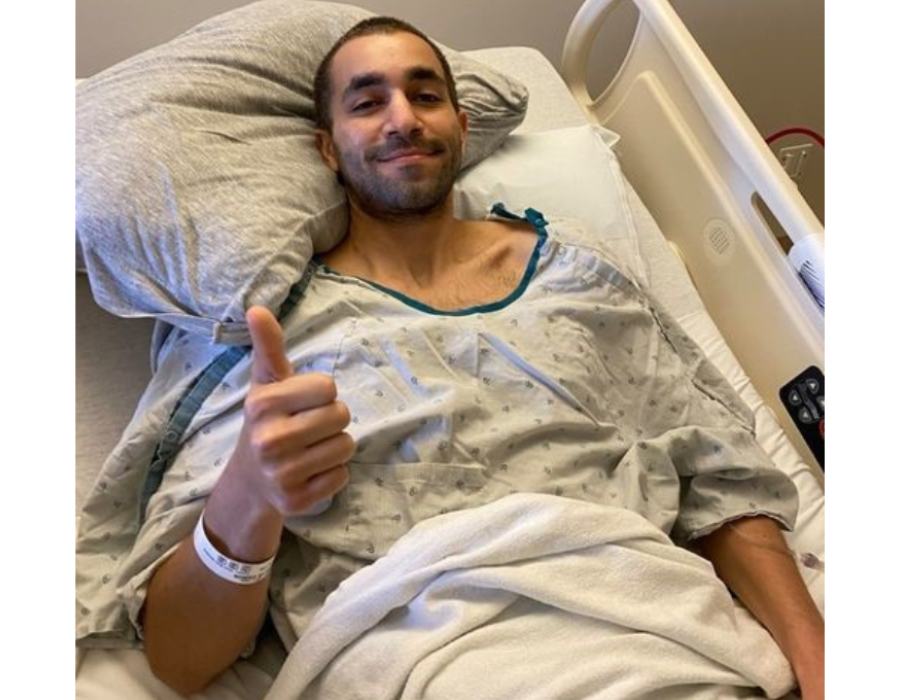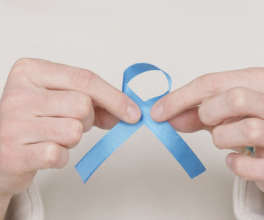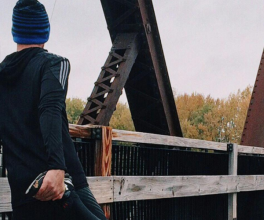
My Colonoscopy Story
Joe Faratzis was only 29 years old when he was diagnosed with Stage IV colorectal cancer (CRC). He had no family history of CRC but started experiencing unusual symptoms in January 2019 that led to a series of doctor’s appointments, tests and his eventual diagnosis of rectal cancer.
Now 34 and a new father, Joe started the Radiant 14 project to help spread awareness around CRC symptoms and the importance of preventive screenings and knowing one’s family health history. Ahead of Colorectal Cancer Awareness Month, Joe agreed to share his most recent colonoscopy experience with Olympus. Given his health history, he follows a colonoscopy schedule determined by his oncologist which is now usually every 3 years. Joe underwent his most recent colonoscopy in October 2023.
By Joe Faratzis
In this blog post, I share my experience of getting a colonoscopy—from enduring the difficult prep to the surprisingly smooth procedure. Early detection can save lives, so if something feels off in your body, advocate for your health!
Getting a colonoscopy isn’t exactly anyone’s idea of a good time. I mean, who wants to drink what feels like a gallon of salty, vaguely lemon-flavored liquid, only to be chained to the bathroom for hours on end? But that’s exactly what I did, and I’m here to tell you: the prep might have been unpleasant, but the procedure itself was a breeze—and totally worth it.
The Prep: A Test of Endurance
Let’s not sugarcoat it: the prep is the worst part. The large amount of liquid you need to drink is designed to clear your digestive system so the physician can get a good look at the lining of your colon. And while the first glass isn’t too bad, by the fifth or sixth, you start to question your life choices. The taste? Not great. The experience? Less great. But it’s a small price to pay for peace of mind and your health.

The Procedure: Smooth Sailing
After surviving the prep, the actual colonoscopy felt like a walk in the park. I showed up at the clinic, got settled in, and after a brief chat with the medical staff, they administered the sedative. I don’t even remember falling asleep. When I woke up, it was over—just like that. No pain, no discomfort, just a bit of grogginess from the sedative.
Why It Matters
So why am I sharing this story? Because colonoscopies can save lives. Colon cancer is highly preventable and treatable when caught early.
During a colonoscopy, your physician can remove polyps that could develop into cancer.1 And the 5-year relative survival rate is 91% when CRC is caught before spreading outside of the colon or rectum, according to the American Cancer Society.2 Yet, because it’s usually associated with older adults, younger people often face resistance when they ask for a screening.
If you’re young and experiencing symptoms, or if you have a family history of colon cancer, don’t let anyone dismiss your concerns. I was only 29 when I was diagnosed with stage 4 colorectal cancer. Looking back, I wish I had pushed harder for a colonoscopy earlier.
You know your body better than anyone else. If something feels off, advocate for yourself. Early detection can make all the difference, and getting a colonoscopy could literally save your life.
Final Thoughts
Yes, the prep is unpleasant, but in the grand scheme of things, it’s a minor inconvenience. The procedure itself is simple, quick, and painless. Don’t let fear or discomfort keep you from taking charge of your health.
If you’re on the fence about getting a colonoscopy or feel like your concerns are being ignored, push for it. Your life is worth it.
1. The Centers for Disease Control and Prevention, “Colorectal Cancer Basics.” Rev. June 12, 2024
2. American Cancer Society, “Survival Rates for Colorectal Cancer.” Rev. January 16, 2025





